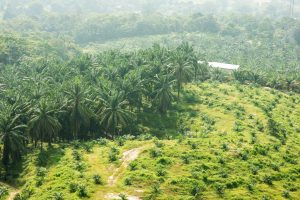ECONOMY AND BUSINESS

Palm oil plantation
Similar to other west coast cities on the peninsula, Seremban began its early life as a mining town. However, after the depletion of the initial deposits and decline of the tin mining industry, agriculture came to the rescue of the state and town economy.
Today oil palm and rubber plantations and smallholdings continue to provide an economic basis. But manufacturing has emerged to become the leading economic sector in Negeri Sembilan.
The state produces electric, electronic and optical goods as well as metal works, vehicle parts, petroleum and chemical products, paper and textile, furniture and wood, and oil and vegetable fats processing.
Latest estimates indicate that the manufacturing sector contributes almost half of the state’s gross domestic product (GDP), followed by services and tourism (40.3%), agriculture (6%), construction (2.2%) and mining (0.3%).
The proximity of Seremban to the national capital Kuala Lumpur has also made it a beneficiary of the ripple effects of KL’s growth especially in the housing sector. It is situated about 57km from Putrajaya and 64km from Cyberjaya respectively by road.
The driving distance between Seremban and Kuala Lumpur is 67.5 km, and between Seremban and Nilai is 27km. Although Seremban does not have its own airport, it is actually nearer to Malaysia’s international airport KLIA than Kuala Lumpur.
The cheaper housing in Seremban is convenient for KLites who choose to commute daily to their workplaces in Kuala Lumpur through a 40-minute drive. Aside from the expressway, Kuala Lumpur is also linked to Seremban by KTM Komuter’s electric rail service.
Strong demand for new middle-class residential areas saw the expansion of outer Seremban with the satellite town Seremban 2 growing west of the North–South Expressway.
Seremban 2 hosts the new district administrative offices, court complex, district police headquarters and state fire brigade headquarters.